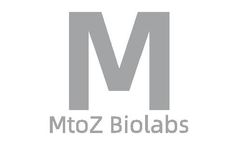Calorimetry Articles & Analysis
5 articles found
Here are some common methods to evaluate the thermal stability of collagen:1. Differential Scanning Calorimetry (DSC)(1) PrincipleDSC is a technique that measures the amount of heat absorbed or released by a sample during heating or cooling. ...
In this blog post, we will delve into the world of microscale thermophoresis, exploring its applications, advantages, and the key differences between MST and Isothermal Titration Calorimetry (ITC). What is Microscale Thermophoresis? Microscale Thermophoresis is a biophysical technique that allows researchers to measure the interactions between molecules in a solution. ...
In this preliminary study, the influence of autoclaving, gamma irradiation and ethylene oxide gas sterilisation on the denaturation temperature and helical content of the collagen was evaluated using differential scanning calorimetry and Fourier transform infrared spectroscopy. Early results indicate that all sterilisation techniques affect collagen properties but suggest that ...
Mechanical and thermal properties were determined by parallel plate rheometry and differential scanning calorimetry (DSC). The results indicated that hydrogels which contained increased percent concentrations of PAA (in the xerogel) were significantly stiffer than those synthesised using PVP alone at test temperatures between 30 and 80ºC. ...
The presence of clay in PLA (exfoliated morphology) leads to a significant decrease of peak of heat release rate measured by cone calorimetry by oxygen consumption.Keywords: solid state NMR, polymer nanocomposites, flame retardancy, clay nanodispersion, polylactide, PLA, heat release rate, cone calorimetry, oxygen consumption, ...



